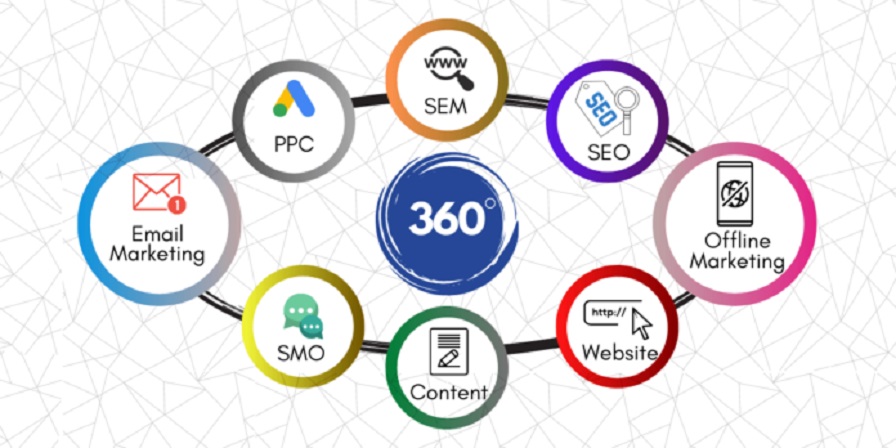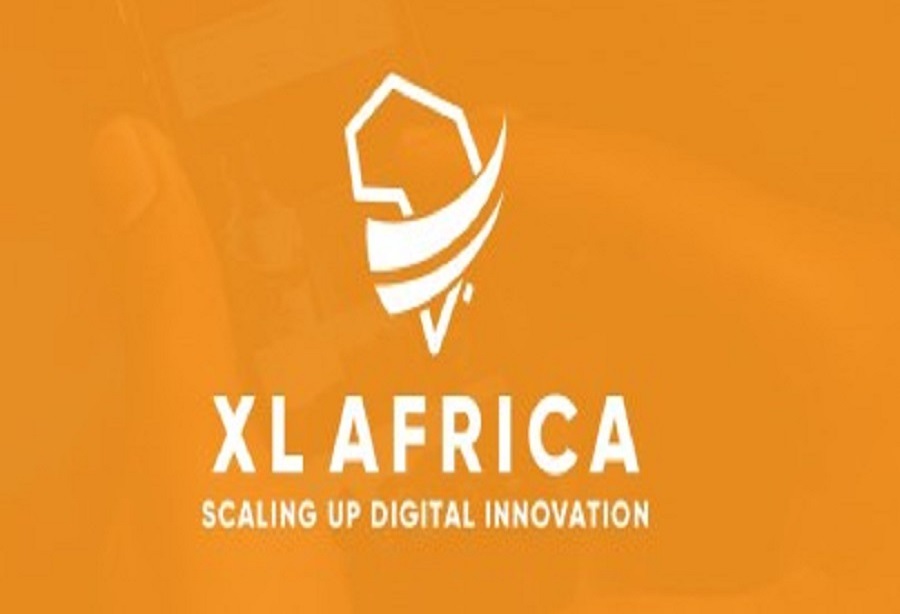Brands/Products
How Start-ups Can Leverage 360 Degrees Marketing Techniques to Increase Sales

By Emmanuel Otori
Sales are a determinant of whether a business would survive or not. The lifeblood of every business is embedded in the day-to-day activities that can generate consistent cash flow.
Some organizations get caught up in trying to do many things are at a time which makes their progression towards activities that contribute to their downline flawed and is visible in the finances of the organizations.
Organizations are not necessarily alarmed until there is a sharp drop in revenue; however, a sharp drop in revenue is only an indication of many other factors beyond what has been observed. This revenue drop is a symptom that some core activities are ailing such as staff retention, customer service, lack of repeat sales, poor product management, unclear definitions of the target market, lack of promotional.
If the sale is consistent, a business can survive the most difficult phases as cash flow is directly linked to the overall activities.
The most important question to ask then is “how can more sales be made”? Without asking this question, the business risks every other form of major distraction.
The 360 degrees Marketing Techniques
The 360 degrees marketing techniques are sometimes called Integrated Marketing Communications (IMC). These techniques are a mix of several activities that organizations are engaged in to increase awareness about a product or service.
The perception of visibility by a customer over a long period of time consistently makes a brand become a sort of inevitable to a customer whenever they need to make a purchasing decision as the brand is the first to come to mind due to the number of exposures they have had with the prospect and vice-versa.
Email Marketing
Email is one of the easiest and fastest ways to reach a large audience and when properly deployed has the potential to create a consistent stream of customers, as it takes the form of a closed user group through the reception of newsletters by the customers and overtime a relationship is built through readership as the audience are regularly updated about eh activities of the organization or products and services.
Email Marketing also helps to create some form of targets as there are metrics that could show who reads a particular newsletter and how many times. Observing the behaviour of the readers and the type of content they are reading could initiate a purchase decision by offering a product that compliments what they read.
Blogging
Blogging is similar to email marketing, but while email marketing is only sent to subscribers or users generated through a third party, blogging reaches out to all possible audiences that are online and serves as a tool to consistently inform customers about the product, services or activities of a business. Regular blogging should average up to 3-5 blog posts weekly to make conversions; this done over a period of 6 months is a guarantee for increased sales.
Granting Media Interviews
As much as the new media is emerging greatly, the traditional media still holds a sit in the preference of most audiences and the ability to use these tools such as television, radio and print media is key to reaching a lot of people. The conversations on these platforms create a direct connection with the listeners as it is visual and the ability to see the person being interviewed as they share industry-based experience makes them look to most audiences like thought leaders. This done over time would make such personality become a face and voice in their sector.
Search Engine Optimization (SEO)
Search Engine Optimization is arguably the first on the list of all techniques as it reduces the time, effort and energy to directly reach out to prospective customers. SEO guarantees that prospects can easily find an offer and make a purchase decision as it places a brand right where the audience is seeking answers. Sales are also made round the clock with no limitation of where the customer buys from.
Networking
Getting exposure as a Founder for your business is necessary to build a personal brand first, as this benefit extends to a business brand as trust can easily be built when people can interact with the owner of the business. A core part of business visibility is to ensure that a business owner continuously puts themselves out there as many times as possible, and this consistency over time is able to drastically build loyalty right from the onset and sales.
While there are many other techniques in addition to the ones mentioned, engaging in one or more of these activities has the potential to increase the revenue base of the business and reachability.
Emmanuel Otori has worked on the GEM Project of the World Bank, conducted training for entrepreneurs and professionals at the Abuja Enterprise Agency and has over 8 years of experience working with over 50 SMEs across Nigeria. He can be reached via https://www.linkedin.com/in/emmanuelotori/
Brands/Products
MAGGI Unveils ‘Taste of Christmas’ Campaign

MAGGI, the culinary brand from Nestlé Nigeria, has announced the launch of its festive campaign, Taste of Christmas, designed to celebrate the sights, sounds, and flavours that define the Nigerian Christmas experience.
Central to the campaign is a collaboration with Nigeria’s fast-rising pop star Qing Madi and the renowned Loud Urban Choir, resulting in a new Christmas anthem titled Taste of Christmas.
Now available across all major music streaming platforms, the song blends contemporary sound with cultural warmth, evoking the joy of family, togetherness, and shared meals that characterize the season.
Extending beyond music, the Taste of Christmas campaign will roll out a curated series of festive recipes and culinary inspiration over a 12-day period. The collection features creative twists such as Coco Bongus, alongside beloved Nigerian classics, encouraging families to explore new flavours while enjoying MAGGI’s trusted range of seasonings.
Commenting on the campaign, the Category Manager for Culinary at MAGGI, Ms Funmi Osineye, said, “Christmas is a time when family, culture, and shared experiences come alive. With the Taste of Christmas campaign, we set out to create a platform that resonates strongly with today’s young adults while still celebrating the warmth of home. Partnering with Qing Madi and The Loud Urban Choir allows us to connect music and food in a way that feels authentic, modern, and deeply Nigerian.”
The campaign further reflects MAGGI’s commitment to celebrating home-grown talent, nurturing culinary creativity, and strengthening the role of food as a unifying force in Nigerian homes.
Consumers can access festive recipes, campaign content, and the Taste of Christmas anthem on MAGGI’s digital platforms and social media channels. Conversations around the campaign can be followed using #MAGGIChristmas.
MAGGI is a leading culinary brand from Nestlé Nigeria, committed to inspiring better cooking habits and bringing families together through delicious, nutritious meals.
Brands/Products
FG Suspension of Sachet Alcohol Ban Excites NECA

By Modupe Gbadeyanka
The decision of the federal government to suspend the ban on alcohol produced in sachets has been welcomed by the Nigeria Employers’ Consultative Association (NECA).
The Director-General of the group, Mr Adewale-Smatt Oyerinde, described it as a right step in the right direction because it respects existing National Assembly resolutions and restores regulatory clarity.
Recall that recently, the Office of the Secretary to the Government of the Federation (OSGF) ordered the suspension of the policy due to concerns raised by the House of Representatives Committee on Food and Drugs Administration and Control.
In a statement, the NECA chief said the immediate suspension of all enforcement actions relating to the proposed ban on sachet alcohol and 200ml PET bottle products, pending the conclusion of consultations and the issuance of a final policy directive, was good for the industry and the economy.
According to him, the sachet and PET segment of the alcoholic beverage industry accounts for a significant portion of the estimated N800 billion invested in the sector and supports thousands of direct and indirect jobs in manufacturing, packaging, logistics, wholesale and retail.
He stressed that in an economy already struggling with high unemployment and rising business costs, abrupt policy measures that threaten existing jobs and legitimate investments would be counterproductive.
“We fully acknowledge the need to address public health concerns, especially regarding children and young people, but the solutions must be evidence-based and carefully designed so as not to drive activities into the informal and unregulated economy or encourage illicit products.
“We are looking forward to a deepened consultation to enable the protection of jobs, livelihoods and legitimate investments, etc., while also ensuring that public health objectives are effectively and sustainably achieved,” Mr Oyerinde said.
Brands/Products
Lafarge Africa Debuts Beyond Buildings Campaign

By Adedapo Adesanya
Top building materials and solutions brand, Lafarge Africa Plc, has unveiled a new thematic campaign tagged Beyond Buildings geared towards highlighting its impact and contributions to Nigeria’s infrastructural development.
The campaign was unveiled by the chief executive of Lafarge Africa, Mr Lolu Alade-Akinyemi, on Monday, December 8, 2025, in Lagos.
Mr Alade-Akinyemi noted that the campaign highlights how Lafarge, through innovative and sustainable building solutions, has continued to shape the socio-economic development and progress of Nigerians and Nigeria by contributing to the construction of various structures, including iconic buildings and bridges, stadiums, hospitals, roads, and more, ultimately aiding the nation’s overall growth.
“For over six decades, beyond the manufacturing of building solutions, we have partnered in building the very foundation of Nigeria’s infrastructural development and its future. With our innovative solutions, we have made a significant contribution to our nation’s progress by providing essential building materials for numerous landmark projects.
“This also extends to the expansion of our production capacity nationwide, creating jobs and livelihoods, bringing development to communities, and introducing innovative products to meet the ever-evolving construction needs of Nigeria,” he said.
He described the campaign as a celebration of strength, innovation, history, shared success, and the power of progress, noting that it is the story of the company’s humble beginnings, which dates back to 1960 when its first factory began production.
“The Beyond Buildings campaign is the story of our vision, which is to be the leading building solutions company, driving innovation and operational excellence to create a greener planet and enable national progress. It shifts the narrative from our products to the profound impact we make on human lives. Our materials transform into national landmarks, powering jobs, livelihoods, and development across every state,” he noted.
The thematic campaign Beyond Buildings spotlights how Lafarge has been a strong and steady partner in building infrastructure that underpins Nigeria’s socio-economic progress.
“We are celebrating our enduring legacy and committing to a new era of sustainable and innovative growth. This campaign empowers us to tell that story with confidence and clarity,” he added.
Delivering his remarks, the Commercial Director of Lafarge Africa, Mr Gbenga Onimowo, stressed that the premiere viewing is an opportunity to share the compelling reasons why the company’s story, ‘Beyond Buildings,’ must be told.
Mr Onimowo stated that the campaign aims to reinforce the company’s position at the heart of Nigeria’s construction growth since independence, as demonstrated by its extensive footprint of infrastructure development across every corner of the country.
‘However, our contribution is not merely about building solutions including cement, mortar, plaster of paris and readymix concrete. It’s about the shared future and the national development we actively enable,’ he said.
He stated that the campaign was designed to move the conversation past the physical structures and shine a light on the socio-economic impact that the company helps create.
“Our campaign highlights the immense progress built on the concrete of trust since 1960. Our materials are integral to iconic landmarks like the National Theatre, 1st and 2nd Niger Bridges, Third Mainland bridge, Lekki-Ikoyi link bridge, the National Assembly Complex and countless national, commercial, academic and residential structures nationwide,” he added.
The event was well attended by distinguished stakeholders from the building and construction sector as well as the arts, culture, media and entertainment industry, alongside many of the company’s esteemed customers including veteran Nollywood actors Richard Mofe-Damijo (RMD) and Kate Henshaw.
-

 Feature/OPED6 years ago
Feature/OPED6 years agoDavos was Different this year
-
Travel/Tourism9 years ago
Lagos Seals Western Lodge Hotel In Ikorodu
-

 Showbiz3 years ago
Showbiz3 years agoEstranged Lover Releases Videos of Empress Njamah Bathing
-

 Banking7 years ago
Banking7 years agoSort Codes of GTBank Branches in Nigeria
-

 Economy3 years ago
Economy3 years agoSubsidy Removal: CNG at N130 Per Litre Cheaper Than Petrol—IPMAN
-

 Banking3 years ago
Banking3 years agoFirst Bank Announces Planned Downtime
-

 Banking3 years ago
Banking3 years agoSort Codes of UBA Branches in Nigeria
-

 Sports3 years ago
Sports3 years agoHighest Paid Nigerian Footballer – How Much Do Nigerian Footballers Earn





















